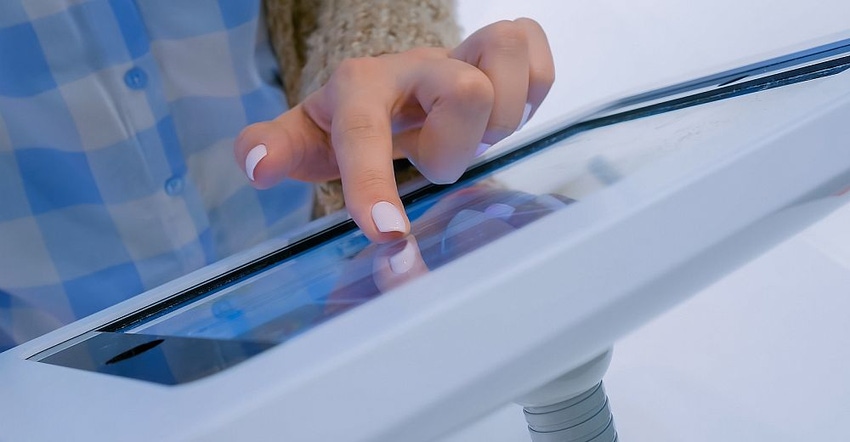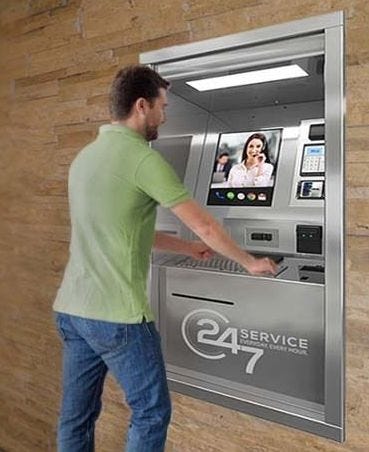Customers want to do business when and how they choose. Installing a kiosk at your self-storage facility can help you meet their expectations. Understand the benefits of this self-service technology and key decision points for choosing a model.

Of critical importance to any self-storage operation these days is the ability for customers to quickly rent a unit whenever the need arises, regardless of what time or day it is. Though many businesses don’t need to be open 24/7, self-storage facilities do. Not being able to accommodate prospects when they’re motivated to rent means lost business opportunities.
This is where a self-serve kiosk can make a difference. Let’s examine the many benefits of using this technology and some key considerations for investing in a model.
Benefits
An interactive kiosk enables self-storage customers to get service when and how they choose. If someone arrives after closing to rent a unit or pay his bill, the kiosk is there. It can also serve as a portal for customer support, equipped with handy user guides, frequently asked questions and how-to information. For a more personal touch, VOIP (Voice over Internet Protocol) and video teleconferencing can be made available via the touch of a button.
For facility operators, being able to offer around-the-clock service is the most immediate benefit, but a kiosk can mean much more to the business. For one, the screen becomes the perfect promotional engine, displaying marketing materials, offering virtual tours and serving as a paperless brochure. Combined with important information and links to sales and offers, the upsell potential is excellent.
When North Carolina-based 10 Federal Self Storage put kiosks in its facilities, the company’s return on investment was significant. Prior to installation, the most units leased in a single month at one facility was 35. The first month after kiosks were deployed, that same facility leased 48 units. 
Kiosks offer an opportunity to enhance your facility and brand, so it’s important to choose the right model and features for your needs. Let’s examine a few key decision points.
Placement
In many ways, the spot where you intend to put the kiosk will drive your choice of product. Freestanding units are large and sturdy and can be secured in place. Other models can be installed through a wall, much like an ATM. Both types require careful placement.
Let’s say you want to put your kiosk outside the office. In that case, you need a model rated for the outdoors, one sealed against moisture, dust and temperature extremes. A brighter monitor is necessary for use under direct sunlight. You’ll also want to protect it via an overhang or enclosure, so customers are protected from the elements.
Interior kiosks give you a bit more flexibility in choice. They’re more likely to be freestanding or small enough to sit atop a counter. These units can be less heavy-duty than outdoor models, which typically means there’s less upfront cost to acquire and deploy them.
Function
In the long run, how you plan to use the kiosk should be the driving factor. Depending on what you want it to do, you’ll likely need to invest in some additional hardware. For instance:
If customers need to submit any form of identification to complete the rental, you might need a license scanner or camera.
If customers will be paying by credit card, you’ll need a card reader, preferably one that can handle chip-enabled cards.
If customers will be paying with cash, you’ll need a bill acceptor, possibly one with the ability to recycle notes and dispense change.
If customers need to connect to an after-hours help desk, you may want to put a handset on the machine, so they can quickly get help with the touch of a button.
Also, consider a full-size or small receipt printer. Barcode readers and signature pads might also be desirable depending on what software you’re using.
Speaking of software, it’s another important consideration. Think of it like buying a new TV. You can put it in your living room and turn it on, but it still needs to receive content from somewhere. Central to your decision-making is which management-software suite you’re already using at your facility and its capabilities. The software you use in the office and the one you install on your kiosk need to work well together.
ADA Requirements
Are your facility and website in compliance with the Americans With Disabilities Act (ADA)? In the past few years, there have been several high-profile lawsuits against businesses that haven’t provided equal access to services for visually impaired customers. Even if you don’t have any such tenants today, a kiosk that has ability to audibly read the contents of the screen can allow you to serve those users in the future and insulate you from potential litigation.
Consumer Desire
An interesting side effect of the coronavirus pandemic has been an invigorated consumer desire to reduce face-to-face transactions. The good news is self-service technology has been around and growing for years, so the critical infrastructure needed is already in place. From pay-at-the-pump gas stations to self-checkout at grocery stores, many people are already familiar with self-serve.
A customer may initially use a kiosk because he has to, such as when he arrives at your self-storage facility after hours; but the trick to getting him to use it willingly is the user experience. If someone can smoothly complete a transaction—meaning without frustration or the need to call for assistance—then he’s very likely to use it again the next time he visits. Large companies like Apple and Amazon have invested millions of dollars to raise the bar and expectations for the usability of any system. Customers who have a good experience using your kiosk will use it again, and they’ll spread the good word with others.

Security
Another important consideration is how to keep the kiosk secure, physically and online. Like any piece of equipment, there’s a chance someone will attempt to break into or steal it. The odds of this occurring increase if it accepts cash. In that case, a wall unit provides more security than a freestanding model. If you do choose freestanding, it should be made with heavy-gauge steel and secured to the floor or wall. Determined thieves are difficult to deter completely, but taking reasonable precautions in material choice and installation will provide an acceptable level of protection.
Data security is a bit different. You want people to access your kiosk and for the unit to be accessible by other networked systems, but only those systems. Proper kiosk-management software should provide the right level of security. The user interface should be locked to only the particular website or software you want customers to access. Using industry-standard firewall and antivirus software, plus automatic security updates, will keep most kiosks running safely.
If something does go wrong, your software should alert you to what’s happening, whether it’s as simple as the printer running out of paper or a critical problem like the kiosk going down. Email or text-message notifications can be sent in real time, allowing you to ward off problems before they become serious.
Capture What You’re Missing
The value of capturing after-hours self-storage rentals should be immediately noticeable to your bottom line. With a bit of planning, deploying kiosk technology can add layers of customer convenience while also elevating your business.
Jeff LeBlanc is director of user experience (UX) at Advanced Kiosks, which manufactures hardware and software for interactive kiosks. He has engineering degrees from Worcester Polytechnic Institute, where he’s currently an adjunct professor teaching courses in UX design. As a former software engineer, he’s an expert at bridging the gap between design and development. For more information, call 866.783.3791.
About the Author(s)
You May Also Like





